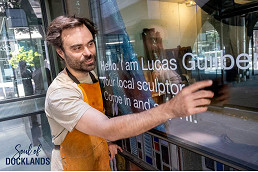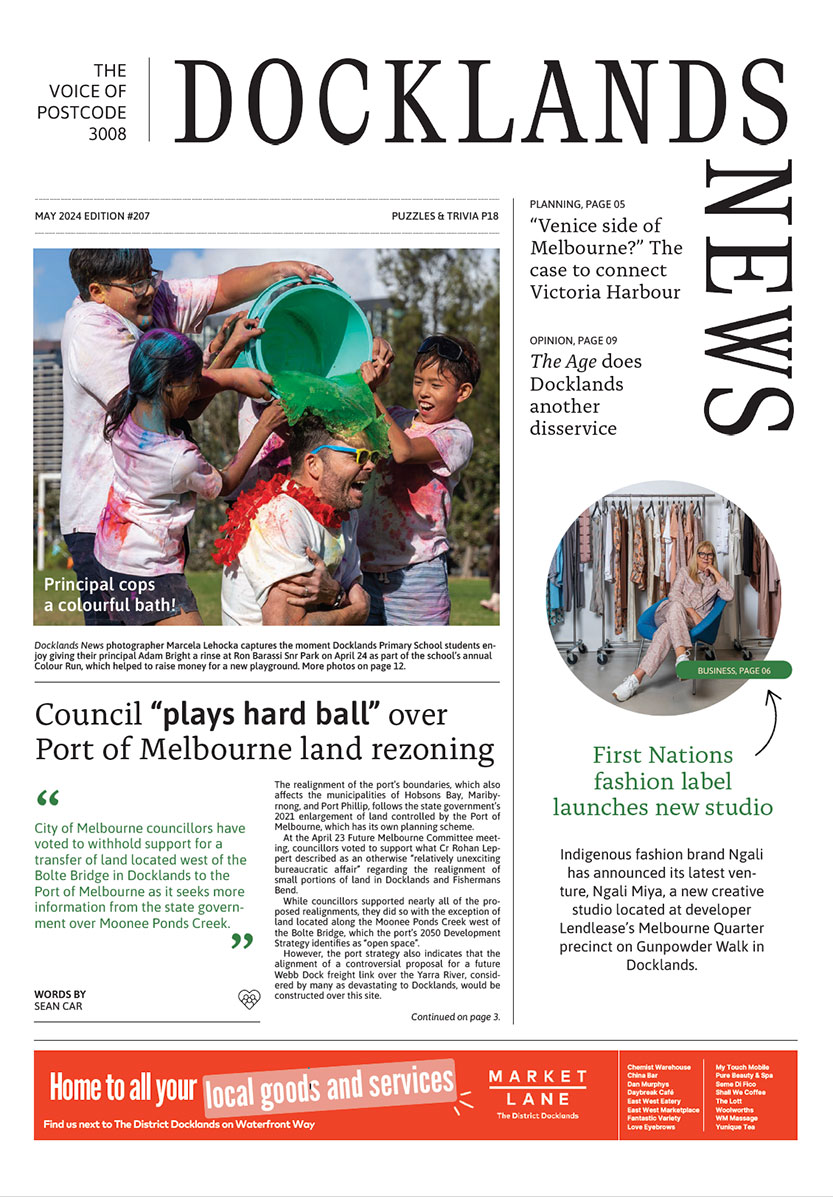Council pushes both levels of government to act on Central Pier
The City of Melbourne is calling on both federal and state governments to make the redevelopment of Central Pier a priority ahead of their respective May and November elections.
Central Pier was listed as a key project by the council in both of its lists of priorities to both levels of government, which included a range of initiatives under the headings of “Economic Recovery”, “City-Shaping” and “Climate Change and Renewable Energy”.
In both documents, the council said, “The pandemic has hit Docklands hard” with vacancy rates in Victoria Harbour and NewQuay both currently sitting at around 25 per cent. “COVID-19 has compounded the challenge of activating and increasing vibrancy within Docklands,” it said.
The council said the loss of Central Pier, which was closed by Development Victoria (DV) in August 2019 due to safety concerns, was contributing to the “perception that Docklands is a precinct in decline rather than a vibrant waterside location.”
“The Docklands Chamber of Commerce estimates the closure of Central Pier has resulted in a loss of between one million and one-and-a-half million visitors to Docklands each year,” the council said.
“A report [by SGS Economics and Planning] commissioned by the City of Melbourne into the economic impact of Central Pier’s closure finds that if remedial action is not taken, the cost to the city economy will be significant over time. Losses to total economic output are set to reach roughly $800 million and 1500 jobs after five years.”
Hence, the council has advocated to both levels of government that Central Pier be considered as an urgent priority under the category of “economic recovery” and has pressed the state government to demolish it and build a “light-weight hospitality/events activation for interim use.”
It has also called on the federal government to partner with the state to fund the pier’s long-term redevelopment.
“The report into the economic impact of Central Pier’s closure also found that there is $13.77 million of economic impact for every $10 million spent rebuilding the pier,” the council said.
Assuming the cost of the pier is $560 million, there would be a $771.21 million benefit in terms of the direct and indirect impacts of construction.
At a residents’ forum in the CBD last month, City of Melbourne CEO Justin Hanney expressed the council’s concern with Development Victoria’s proposal to close the pier for a “longer period of time.”
“Central Pier has been closed for two years now and they’re [DV] proposing to close it for a longer period of time. We’re asking for an immediate demolition or rectification. It used to drag one million people per annum and without it there it’s impacting our city.”
DV’s group head of precincts Geoff Ward told Docklands News it was looking at a range of options for the pier, but safety remained its “main priority.”
“We’re continuing to work with Heritage Victoria, City of Melbourne, local business and the community on long-term plans for Central Pier.”
“We are looking at a range of options for the pier – including removing the structure from the water as soon as practical given some parts are more than 100 years old – with safety of the site our main priority.”
The state government allocated $3 million in last year’s Victorian State Budget to “progress the planning and design” of Central Pier.
Included in the “range of options” currently being looked at by DV is removing the structure from the water “as soon as practical given some parts of the pier are more than 100 years old” as well as options to respectfully preserve the heritage of pier and surrounding docks, “while also taking a wider approach to revitalising the waterfront of Docklands.”
In January, works began to remove the western tip of Central Pier, which is no longer connected to the main structure and has been inaccessible for several years after being deemed structurally unsound.
Specialist marine contractor, Fitzgerald Constructions Australia Pty Ltd, is using a barge system to dismantle and remove the western tip from the water piece by piece.
The works to remove it from the water are expected to be complete in early 2023 and do not include the main structure of Central Pier.
Council advocates for public transport to Fishermans Bend
The City of Melbourne has also included public transport to Fishermans Bend in its suite of priorities for both state and federal governments, calling for the construction of a tram connection and a business case for Metro 2.
The council has requested a total of between $1 billion and $1.5 billion from both levels of government for the construction of a tram route across the Yarra River, which it argues could still be “completed in time for opening of the first phase of the University of Melbourne’s new Fishermans Bend campus in 2025.”
As Australia’s largest ever urban renewal project, Fishermans Bend is forecast to house up to 80,000 residents and accommodate 80,000 jobs by 2050 according to the state government’s planning framework for the precinct.
But unlocking these significant population increases hinges on the delivery of new public transport, with the area – more than two times the size of Melbourne’s CBD – currently devoid of a tram or train network.
The government’s planning framework maps out a tram connection across the Yarra River from Collins St through Yarra’s Edge and Hartley St, “before splitting into two branches” – one along Turner St and the other along Plummer St.
While many Yarra’s Edge residents continue to advocate against the tram bridge through its neighbourhood, which would restrict access to the Melbourne City Marina and travel through Point Park, the council is strongly advocating for it.
“The northern tram line, exclusively in the City of Melbourne, can be constructed along a mostly preserved corridor between the new bridge and Westgate Park in the Fishermans Bend NEIC,” the council said.
“Workers, students and residents need a high-quality public transport service that is safe, efficient and sustainable.”
It has also advocated for a business case to be completed for Metro 2, seen as “the missing link”, connecting Fishermans Bend with the CBD via a new rail tunnel from Newport to Clifton Hill, accompanied by electrification to Geelong •

Council “plays hard ball” over Port of Melbourne land rezoning







 Download the Latest Edition
Download the Latest Edition
